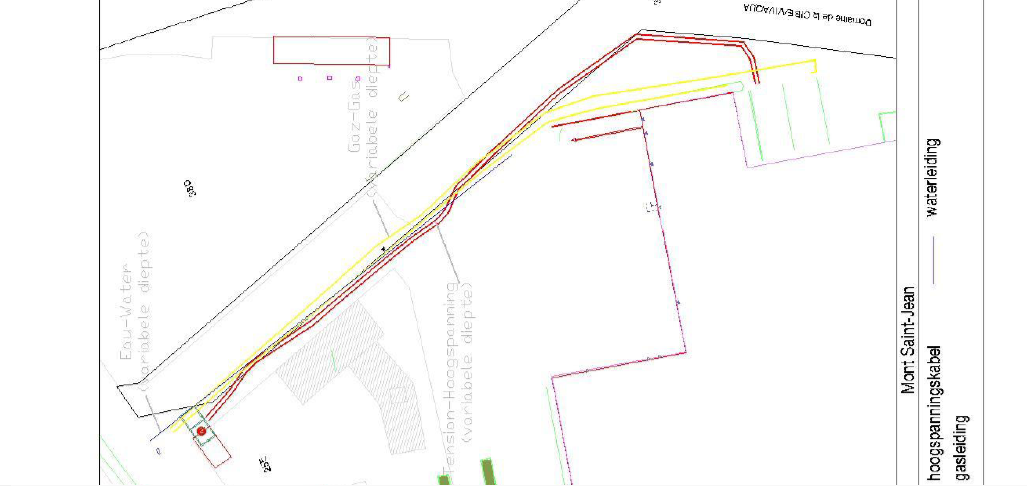Line detections in 2013
In 2013, we completed a total of 71 projects, some of them involving line detection. Examples are given below.
Cable detection in Beveren
ADPO contacted Bom-Be for detecting cables and pipelines around a substation where infrastructure changes were planned. Bom-Be used a combination of GPR and radio detection to determine the position and depth of these lines.
Line detection – surface detection – radio detection / GPR
Electrified radio detection and GPR
Elia Engineering contacted Bom-Be for a survey of cables and conduits in view of the reconstruction of a 150/36kV substation in Hoogstraten, since no history of this site was available. The substation was still active, with live cables nearby. For this assignment we made a combined use of two detection techniques. With passive radio detection we determined the position and depth of the live cables. This ‘cable finder’ was also used for dead cables: their position is determined by an induction measurement, their depth by active radio detection, where a voltage is applied to the cable at an accessible point. Next, we covered the entire area with Ground Penetrating Radar (GPR), so that the unconnected and non-metal conduits could also be mapped out. We used an Infraradar with a range of 2,1 m. Up to this depth, we were able to provide a complete image of cables and conduits.
Line detection – surface detection – radio detection / GPR
Radiodetection of cables in Waterloo
Redevco Retail Belgium SCS contacted Bom-Be for determining the position of cables and conduits on 2 Waterloo sites, at Mont-Saint-Jean and on the Chaussée de Bruxelles (Carrefour grounds). Measurements were made with a radiodetection cable tracker. There are two ways of working: one is to measure the signal of a live cable, the other is to apply a radiosignal on an accessible point of the conduit, e.g. with a clamp. In both cases, the position and depth of the conduit can be determined.
Line detection – surface detection – radio detection





